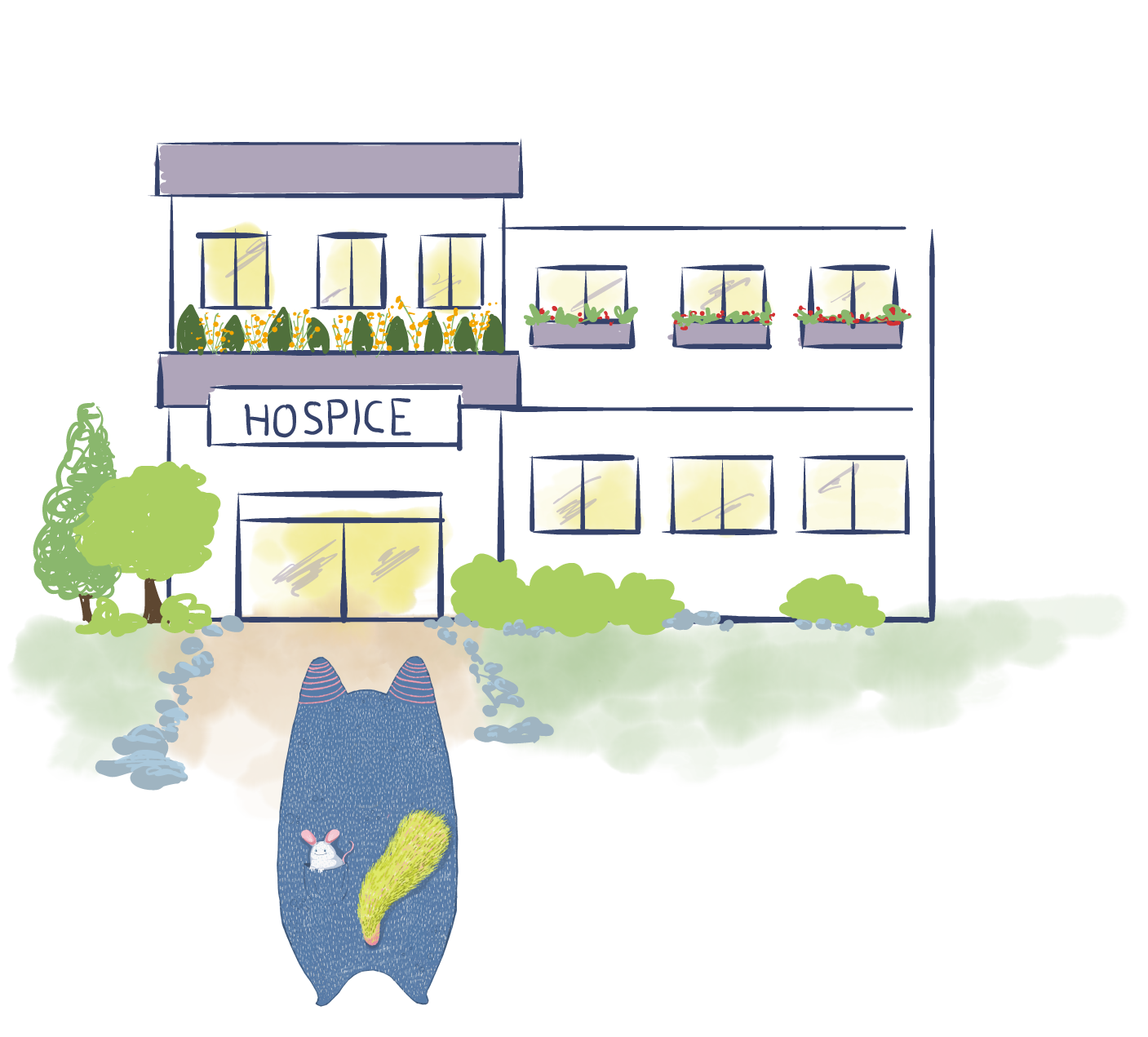What is a hospice?
A hospice takes care of people when they are very poorly.
There are lots of people working at a hospice.
-
Consultant
A doctor in charge of the person’s care. They give medications for pain, and other problems.
-
Nurse
Makes sure the person and their families get everything they need to keep them comfortable.
-
Ward clerk
Makes sure the ward runs smoothly.
-
Healthcare assistant
Listens, talks and laughs with people and help them do the things they can’t do so well anymore.
-
Domestic assistant
Keeps the hospice clean and tidy, and may also bring round meals to people on the ward.
-
Physiotherapist
Helps people to move and use their bodies.
-
Occupational therapist
Helps people with the things they love doing and have to do in everyday life, such as washing.
-
Speech and language therapist
Helps people to speak as well as to swallow more comfortably if they have difficulties.
-
Dietician
Helps people eat the right things when they are ill.
-
Community nurse specialist
Gives advice about how best to manage being ill at home.
-
Complementary therapist
Helps people by gentle touch and relaxation such as massage or meditation.
-
Psychological therapist
Helps people with their thoughts and feelings. Sometimes they are called a counsellor or clinical psychologist.
-
Social worker
Helps people with feelings as well as practical things like work, money and housing.
-
Chaplain
Visits people to chat about anything that would be helpful and can pray with a person.
This amazing team try and make a sick person feel as comfortable as possible, so they can do the things they love.
They might:
Give medicines to help with pain
Help people move their bodies
Help with thoughts and feelings
This kind of care is sometimes called palliative care.
You say it like this:
‘pally – a – tive’
How is it different from a hospital?
Hospices do not focus on trying to cure illnesses; instead hospices work to make a person as comfortable as possible.
People can stay at a hospice because:
They would like a break, and their families would like a break from caring.
They would like some help with a problem caused by their illness. They usually go home again when they are feeling a bit better.
They decide to come to the hospice at the end of their lives and will die there. The hospice team will look after them and their family right to the end.
Lets look inside a hospice
Hospices can look and feel very different from hospitals. They are often smaller buildings, quieter and less busy.
Pip’s rules for visiting a hospice or a hospital
-
Things you can do
Laugh
Talk to the nurses and doctors
Colouring In
Read books
Play with toys by the bed

-
Things you can’t do
Shout or be super noisy…
because some people might be sleepingRun about…
because you might accidently knock something (or somebody) overPlay with the machines…
or plastic tubes that help sick people
Can you think of some other rules?
Sometimes people have hospice care at home.
What does this mean?
A special team of people who are there to help the sick person will visit the home, and make sure the person is comfortable, can move around as much as they need to, and do all the necessary things such as going to the toilet and cleaning themselves.
You might start to see new special equipment being used in the house, more nurses coming and going, and perhaps different rooms being swapped about, like the lounge becoming a bedroom.


